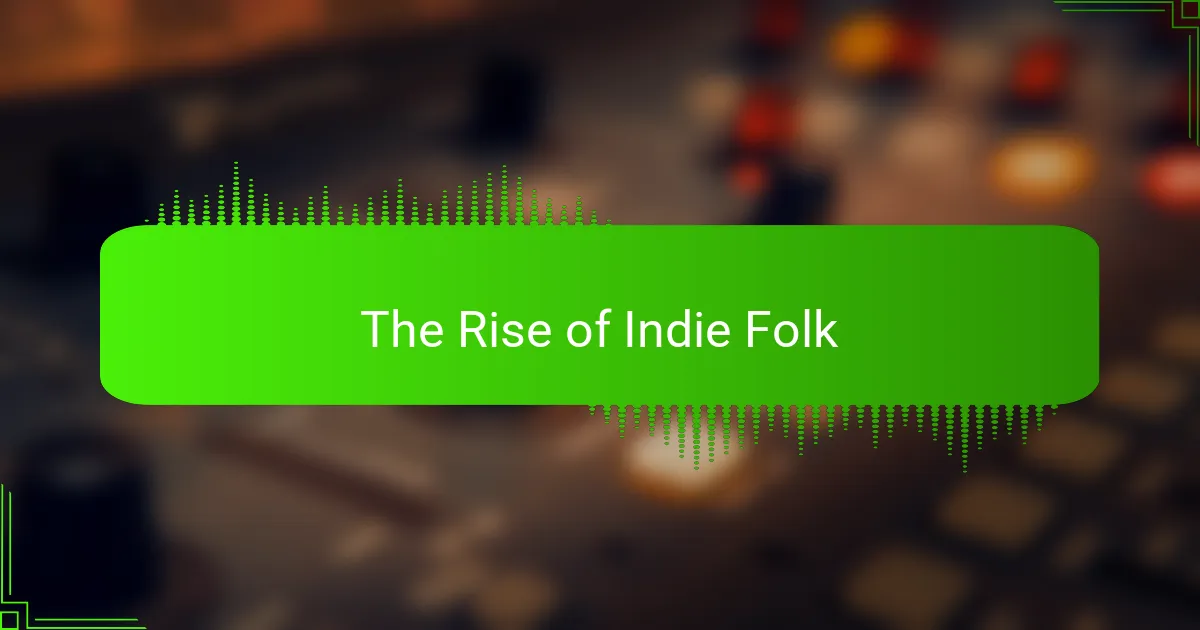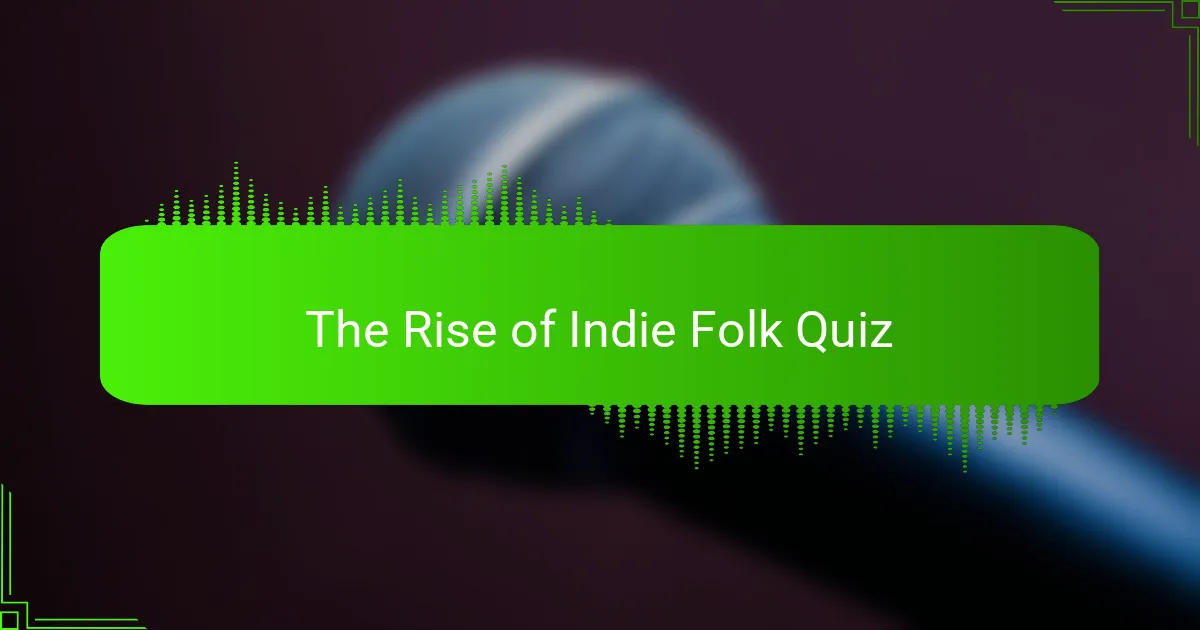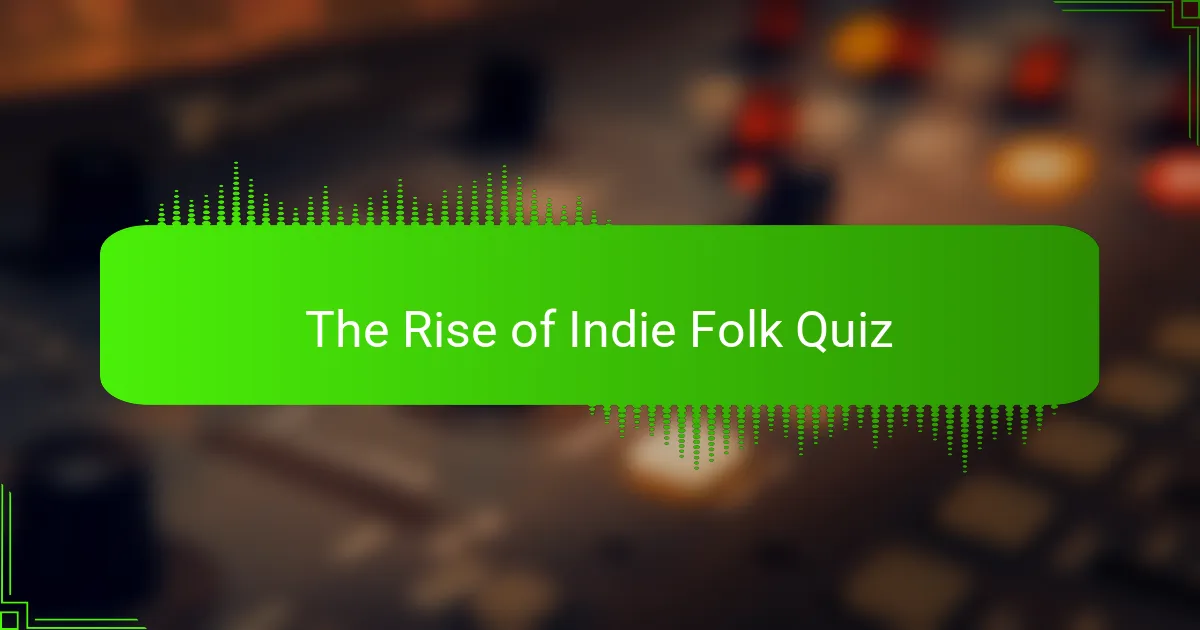
Quiz Completed: Celebrate Your Knowledge of Indie Folk!
Congratulations on completing the quiz about ‘The Rise of Indie Folk’! You’ve journeyed through the enriching world of this genre, exploring its origins, key artists, and defining moments. Whether you discovered new musicians or revisited familiar tunes, every question offered a chance to reflect on indie folk’s unique charm and impact on today’s music landscape.
Throughout this quiz, you’ve likely learned about the nuances that set indie folk apart from other genres. From the emphasis on storytelling and acoustic instrumentation to the thriving community of independent artists, you’ve gained insights into the heart of indie folk music. Understanding these elements not only enhances your listening experience but also connects you deeper to the artists and songs you love.
To further expand your knowledge, we invite you to check out the next section on this page. It’s packed with information on ‘The Rise of Indie Folk,’ including artist spotlights, influential albums, and historical context. Dive deeper into this captivating genre and uncover even more reasons to appreciate its beautiful melodies and heartfelt lyrics!

The Rise of Indie Folk
The Evolution of Indie Folk Music
Indie folk music has roots that trace back to the late 20th century, blending elements of folk tradition with an independent approach. Artists like Sufjan Stevens and Iron & Wine emerged in the early 2000s, bringing acoustic sounds, introspective lyrics, and a do-it-yourself ethic. Today, the genre incorporates various influences, from pop to electronic elements. This evolution is significant in defining the contemporary indie sound, which often prioritizes artistry and authenticity over commercial success.
The Impact of Streaming Platforms on Indie Folk Artists
Streaming platforms like Spotify and SoundCloud have radically transformed the landscape for indie folk artists. These platforms offer a low barrier to entry, enabling independent musicians to reach global audiences. Artists such as Phoebe Bridgers and Hozier gained prominence through streaming, showcasing that virality can supplement traditional music marketing. This shift allows for diverse representations within the genre, reshaping listener accessibility and artist visibility.
The Role of Social Media in Promoting Indie Folk Music
Social media plays a crucial role in disseminating indie folk music to broader audiences. Platforms like Instagram and TikTok allow artists to connect directly with fans, share behind-the-scenes content, and promote new releases. For instance, artists such as Lana Del Rey and Ben Howard have utilized these platforms to cultivate loyal fan bases. The personal connection fostered through social media often translates into increased engagement and support during live performances and album releases.
Collaborations and Cross-Genre Influences in Indie Folk
Collaborations within and outside the genre define the modern indie folk scene. Artists frequently cross genres, incorporating elements from rock, pop, and even hip-hop. Collaborations between indie folk artists like The Lumineers and mainstream acts such as Taylor Swift highlight this trend. These partnerships not only expand acoustic boundaries but also introduce indie folk to new audiences, illustrating its versatility and adaptability in the evolving music industry.
The Future of Indie Folk in a Digital Age
The future of indie folk music appears promising yet challenging. As technology continues to evolve, artists must adapt to new methods of production and distribution. With the rise of artificial intelligence and virtual reality, artists will have innovative avenues for creativity. Emerging artists such as Arlo Parks and Orville Peck represent the genre’s potential to thrive amidst these changes, emphasizing lyrical depth and cultural relevance while exploring distinctive sounds. The journey of indie folk will likely include further fusion with various styles, ensuring its ongoing evolution.
What is Indie Folk?
Indie folk is a music genre that blends elements of independent music and folk traditions. It emerged in the early 2000s as artists sought to create authentic, heartfelt music outside the mainstream music industry. Prominent indie folk artists include Sufjan Stevens and The Lumineers, known for their acoustic instrumentation and introspective lyrics. The genre often emphasizes storytelling and emotional connection, which resonates deeply with listeners.
How has Indie Folk gained popularity?
Indie folk gained popularity through the rise of digital platforms and social media, allowing artists to reach broader audiences without major record labels. Platforms like Bandcamp and SoundCloud enabled musicians to distribute their music easily. Notably, in 2012, the success of The Lumineers’ hit “Ho Hey” showcased indie folk’s commercial potential, further driving interest in the genre. This accessibility has led to a flourishing of new artists and increased visibility for the genre.
Where can you find Indie Folk music today?
Indie folk music can be found across various streaming platforms like Spotify, Apple Music, and YouTube. Many indie folk artists have dedicated playlists featuring their work. Additionally, music festivals such as Newport Folk Festival and Bonnaroo often feature indie folk performances, emphasizing the genre’s continuing appeal in live settings.
When did Indie Folk start to rise in prominence?
Indie folk began to rise in prominence in the early 2000s, particularly around 2007 to 2012. During this time, albums like Bon Iver’s “For Emma, Forever Ago” and Iron & Wine’s “The Creek Drank the Cradle” helped define the genre’s sound. The combination of internet exposure and the DIY ethos cultivated a community of artists exploring folk influences.
Who are some notable Indie Folk artists?
Notable indie folk artists include Bon Iver, Fleet Foxes, Iron & Wine, and Sufjan Stevens. Each of these artists has made significant contributions to the genre, shaping its sound and expanding its audience. Bon Iver’s “For Emma, Forever Ago” is often cited as a seminal indie folk album, while Fleet Foxes’ self-titled debut garnered widespread acclaim, solidifying their status within the genre.

